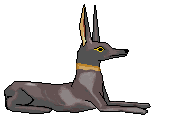Ramses Forgotten Temple of Beit El-Wali (Soon Possible After 100 Years)
- Curtis Ryan Woodside

- Mar 26, 2019
- 3 min read
Ancient Nubia now know as North Sudan, was for thousands of years under the control of EGYPT! From Amenhotep III, Thothmoses, Amunemhat and many more Pharaohs ruled over the state of Nubia. But one Pharaoh left a glorious sight (one of many) in Nubia on the Island of Kalabsha. This temple is painted so vividly that one might think it can't be possible, but it survived! It will soon be possible to once again visit Nubian sights while on your next trip to Egypt.

After 100 of closure, the Nile cruise route will be opened again which allows tourists to travel by boat from Aswan down into Nubia to see the once forgotten sights. A place that I would absolutely love to visit is the Temple of Beit El-Wali built by Ramses II. The temple was the 1st commission from Ramses in Nubia. Dedicated to the Gods of Amun Ra, Khons, and the river Goddess Anuket. Located 50KM south of Aswan.

Like Ramses Abu Simbel Temples, Beit El Wali was relocated during the 1960s as a result of the Aswan High Dam project and moved towards higher along with the Temple of Kalabsha. This move was spearheaded by a team of Polish archaeologists and financed by the Swiss and Chicago Egyptological Institutes.

During the New Kingdom, Nubia was ruled by Egyptian kings and were a strong asset to the Egyptian army and gold trade. The intention of this was to adapt Nubian identities. Many Nobel and high-ranking Nubians were educated in Egypt and later on adopted Egyptian cultures, dress, burial customs and religion. They spoke ancient Egyptian, even changing their names. Many Egyptian monuments in Nubia were built to intimidate the locals. Letting them know who is in charge. For example the temple of Soleb shows Queen Tiye (Wife of Amenhotep III) stepping on the heads of the Nubians.

The Colours of Beit El Wali have faded on the exterior, yet inside they are extremely well preserved. Much like Seti I had trained Ramses from a young age, Ramses did the same with his sons. Amun-her-khepsef and Khaemwaset are shows as young princes being taught how to fight in battle by their Pharaoh father. The princes are distinctive due to their blue colour side lock of hair, which would be cut off around the age of 12 once they reach "man-hood" Below Ramses horse are Nubian enemies, shown by their unique features and dress.

Ramses show on the royal throne receiving the offerings from Nubians. Along side is Ramses eldest son and Egyptian Vizier Amenemope leading the Nubians to the king. Ramses then rewards his son with large amounts of gold.

Another wall shows the vast amount of luxurious offerings and gifts from their neighbours. Leopard skins, exotic cats such as cheetah, giraffes, monkeys, leopards, cattle, antelopes, lions, ostrich feathers and eggs, perfumes, ebony, ivory, shields and gold,

Another scenes shows ramses with the white head cloth smiting a Nubian showing his power.

Many scenes show ramses giving offerings to the Gods Amun, Ra and Khons. But upon closer inspection, these scenes show Ramses and a very Young Prince...detailing his rise to power and how his father prepared him to become him. To the very left, the young prince is being suckled by Anuket, the Nile Goddess. A symbol of her raising him with her powerful motherly soul.

Similar to Abu Simbel temples, Beit El Wali has an inner sanctuary that is illumined directly by the sun on 2 days of the year - Symbolising the Kings birth and death days. Pharaoh is seated between Amun-Ra in the Ram Form and Anuket.

In the early Christian Coptic time, this temple was used as a church. Many travellers visited the temple in the late 1800's and its architectural and artistic details were published by Günther Roeder in 1938.

Who wouldn't want to visit this amazing place and discover some of the greatest archaeological treasures that have almost been forgotten.
Want to join me on a Cruise through Egypt and Nubia?








Comments